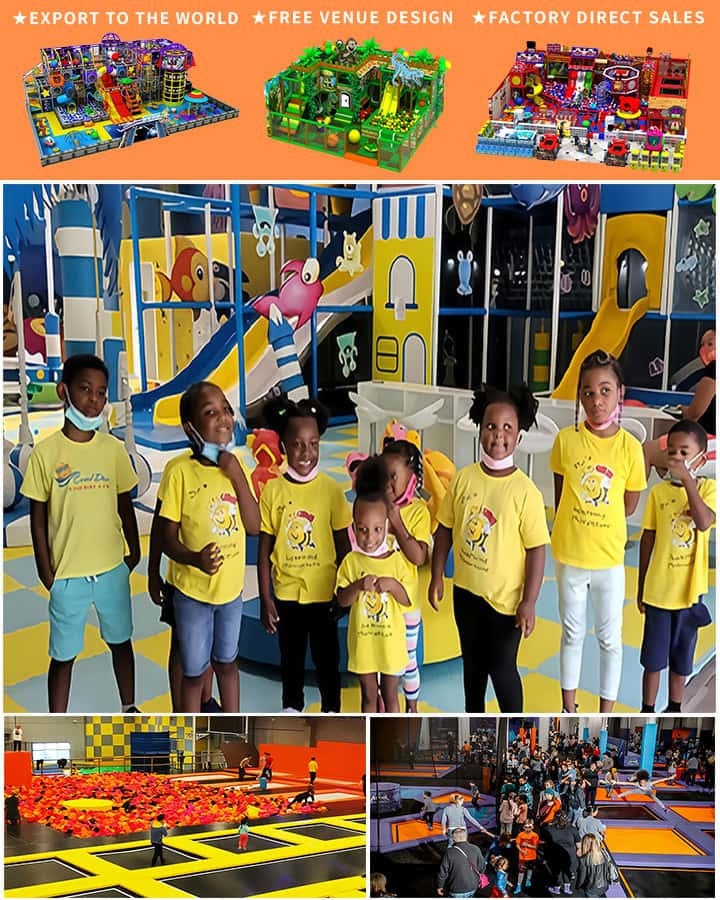Creating a safe and engaging environment for preschoolers is essential for their physical, social, and cognitive development. One effective way to achieve this balance is through the thoughtful selection of indoor playground equipment. The right equipment not only entertains young children but also supports their growth in multiple areas. This article explores the importance of indoor preschool playground equipment and offers tips on choosing the best options for your childcare center.
The Importance of Indoor Playgrounds
Indoor playgrounds serve as an excellent alternative to outdoor play areas, especially in regions with harsh weather conditions or limited outdoor space. These facilities enable children to engage in physical activities throughout the year, promoting better health and well-being. Additionally, indoor playgrounds offer a controlled environment where safety can be more effectively managed, reducing the risk of injuries that might occur outdoors.
Key Elements of Safe Indoor Playground Equipment
When selecting indoor playground equipment, several factors must be considered to ensure both safety and enjoyment:
Age Appropriateness: Equipment should be suitable for the children’s age group. Toddlers, for example, require different kinds of stimulation compared to older preschoolers. Make sure the equipment matches the developmental stage of the children using it.
Material Safety: Choose non-toxic, durable materials that can withstand heavy use. Avoid equipment with sharp edges or small parts that could pose choking hazards.

Structural Integrity: Ensure that the playground equipment is structurally sound. Loose bolts, weak joints, or unstable structures can lead to accidents. Regular inspections are crucial to maintain safety standards.
Soft Landings: Flooring materials should provide adequate cushioning to prevent injuries from falls. Foam mats, rubber tiles, or carpeted surfaces are good options.
Supervision: Even the safest equipment requires proper supervision. Qualified staff should monitor children to quickly address any issues that arise.
Popular Types of Indoor Playground Equipment
Several types of equipment are commonly found in indoor preschool playgrounds. Each serves a unique purpose in fostering development:
Climbers and Slides: These structures help develop gross motor skills and coordination. Climbing walls, ladders, and slides encourage physical activity and build confidence.
Tunnels and Obstacle Courses: Tunnels and obstacle courses enhance spatial awareness and problem-solving skills. They also encourage imaginative play and cooperation among children.
Interactive Panels and Games: Educational panels with interactive elements can teach letters, numbers, shapes, and colors while keeping children engaged.
Bounce Houses and Soft Play Areas: These areas are perfect for expending energy and improving balance and coordination. They offer a softer landing surface, reducing the risk of injury.
Sensory Play Equipment: Items like sensory tables, water play features, and sand pits stimulate tactile and sensory exploration, crucial for cognitive development.
Tips for Maximizing the Benefits of Indoor Playgrounds
To get the most out of your indoor playground equipment, consider these additional tips:
- Rotate Equipment: Periodically change the setup to keep the environment novel and exciting for children.
- Incorporate Learning Activities: Integrate educational games and activities into the play structure to promote learning while playing.
- Encourage Social Interaction: Design the playground layout to facilitate group play, helping children develop social skills.
- Parent Involvement: Involve parents through open houses or special events, allowing them to understand the value of the playground equipment.
In conclusion, indoor preschool playground equipment plays a vital role in providing a safe, stimulating environment for young children. By carefully selecting age-appropriate, safe, and engaging equipment, childcare providers can support the holistic development of preschoolers. With thoughtful planning and regular maintenance, indoor playgrounds can be a cornerstone of early childhood education and care, offering endless opportunities for fun and learning




